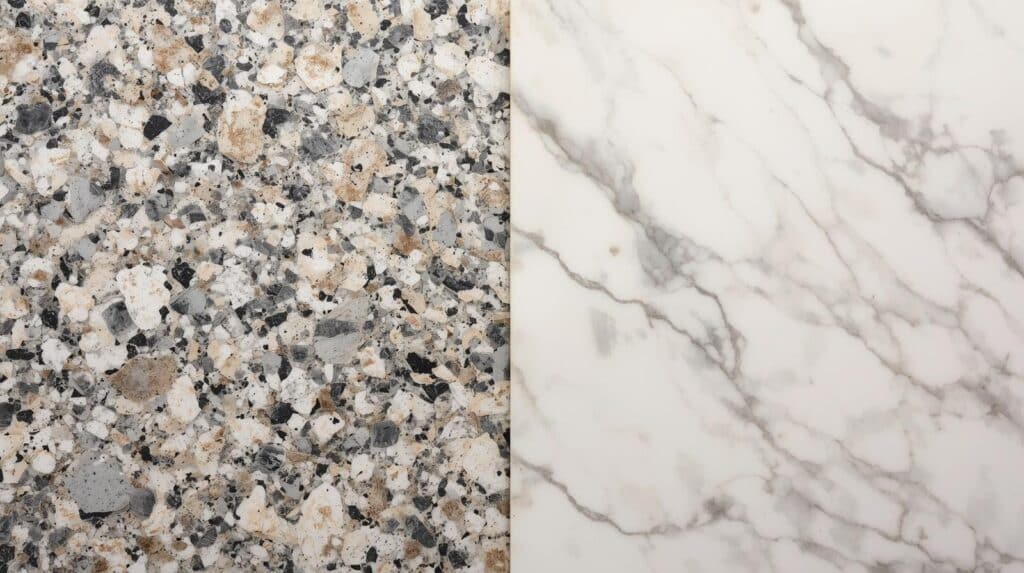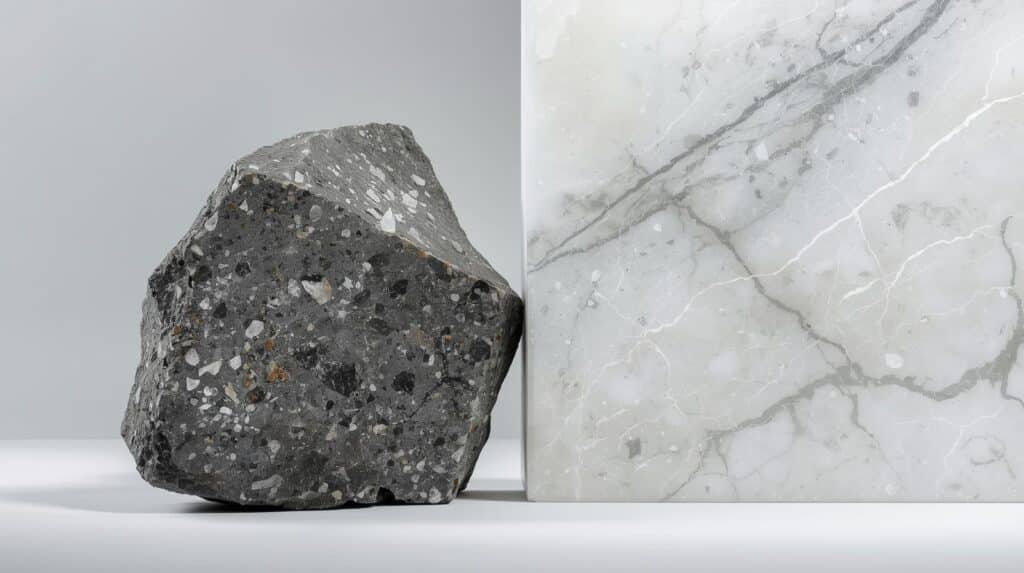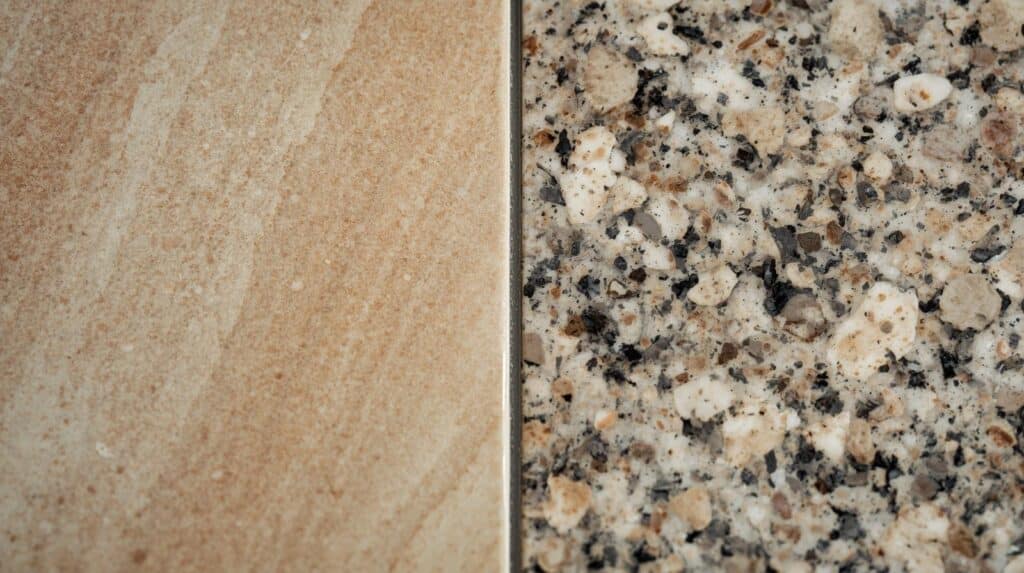Welcome to The Stone and Tile Studio, your trusted source for premium stones and tiles in Jaipur, Rajasthan. At thestoneandtilestudio.com, we specialize in high-quality materials that enhance homes and commercial spaces across India. In this blog, we explore why granite, especially in 3cm thickness, stands out as the best choice for countertops compared to marble, quartz, tiles, and other stones. With its durability, low maintenance, and cost-effectiveness, granite offers unmatched value. Whether you’re renovating your kitchen in Jaipur or anywhere in India, understanding these differences can help you make an informed decision
The Advantages of Granite Countertops
Granite is a natural stone formed from cooled magma, making it incredibly hard and resistant to daily wear. Unlike engineered or softer materials, granite provides a timeless appeal with unique patterns and colors. At The Stone and Tile Studio, we recommend 3cm thick granite for its superior strength. This thickness ensures the slab can span larger areas without support, reducing installation complexity and costs.
One key benefit of 3cm granite is its enhanced durability. It resists impacts better than thinner options, preventing cracks or breaks even under heavy use. In Indian kitchens, where cooking involves heavy pots and spices, this robustness is essential. Additionally, 3cm granite often requires no sealing due to its dense structure, which minimizes porosity and protects against stains from oil, turmeric, or acidic foods like lemon.
Compared to other stones, granite maintains its polish over time without fading. It’s heat-resistant, allowing hot pans to be placed directly on it without damage—a practical feature for busy Indian households.
Drawbacks of Marble and Why Granite is Better

Marble is elegant but comes with significant drawbacks that make granite a wiser choice. Marble is highly porous, absorbing liquids quickly and leading to stains that are hard to remove. In India, where kitchens see frequent use of colorful spices and oils, marble countertops can discolor easily. It also etches from acids in common items like vinegar or citrus, causing dull spots.
Maintenance is another issue with marble. It needs regular sealing—every 6-12 months—to prevent damage, adding to long-term costs. Marble is softer than granite, scratching more easily from knives or utensils. Cracks can develop over time, especially in thinner slabs.
In contrast, 3cm granite eliminates these problems. Its hardness (rating 6-7 on the Mohs scale) resists scratches and etching. No frequent sealing is required, and it won’t crack under normal use. For homeowners in Rajasthan’s hot climate, granite’s stability prevents warping, unlike marble which can be affected by temperature changes.
Quartz Countertops: Limitations Compared to Granite

Quartz is an engineered stone made from crushed quartz mixed with resins. While it’s non-porous and stain-resistant, it has notable downsides. Quartz is not as heat-tolerant as granite; placing a hot tawa or pot directly on it can cause scorching or discoloration due to the resin content. In Indian cooking, this is a common risk.
UV exposure from sunlight can fade quartz over time, making it less ideal for well-lit kitchens. Seams are often visible in larger installations, detracting from the seamless look of natural granite. Quartz is also heavier and more expensive to install.
Opting for 3cm granite addresses these issues effectively. It handles heat up to 500°C without damage and doesn’t fade under sunlight. The natural veining provides a premium, authentic appearance without visible seams. Plus, granite’s strength means no worries about chipping at edges, a potential issue with quartz.
Tiles and Other Stones: Why They Fall Short

Ceramic or vitrified tiles are affordable but lack the sophistication of granite. Grout lines between tiles collect dirt and grime, requiring frequent cleaning to avoid mold—especially in humid Indian conditions. Tiles can crack under impact, and replacing individual pieces disrupts the entire surface.
Other stones like limestone or sandstone share marble’s porosity issues, staining easily and needing high maintenance. They are softer, wearing down faster in high-traffic areas.
3cm granite outperforms here by offering a seamless, hygienic surface with no grout lines. Its thickness ensures longevity without cracks, making it ideal for countertops that endure daily chopping and cleaning. In Jaipur’s dusty environment, granite’s easy wipe-down maintenance saves time and effort.
Cost Comparison: Purchase Price vs. Maintenance Expenses
When selecting countertops, consider both initial buy price and ongoing operational (maintenance) costs. In India, prices vary by region, but here’s a realistic comparison based on 2025 rates per square foot (sq ft).
Granite starts at ₹50-150 for basic varieties, rising to ₹200-450 for premium options like black or white granite. For 3cm thickness, expect ₹100-300 sq ft, including installation.
Marble ranges from ₹35-200 sq ft, but premium Italian types hit ₹700. However, maintenance adds up: sealing costs ₹10-20 sq ft annually, plus potential stain removal at ₹500-1000 per incident.
Quartz is pricier at ₹240-550 for 2cm and ₹350-650 for 3cm slabs. No sealing needed, but repairs for heat damage can cost ₹2000-5000, and UV fading might require replacement.
Tiles are cheapest at ₹60-150 sq ft for ceramic/vitrified, but grout cleaning services run ₹5-10 sq ft yearly, and crack repairs add ₹1000-3000.
Example: For a 50 sq ft kitchen countertop in Jaipur, 3cm granite might cost ₹10,000-15,000 upfront. Maintenance? Minimal—just soap and water, no sealing required, saving ₹500-1000 yearly compared to marble. Over 10 years, marble could add ₹5,000-10,000 in extras, while quartz’s higher buy price (₹17,500-32,500) offers no long-term savings if damaged.
Choosing 3cm granite balances affordability with durability. No cracks mean no repair bills, and its longevity (50+ years) outlasts alternatives, providing better ROI.
Conclusion: Make the Smart Choice with Granite from The Stone and Tile Studio
In summary, granite—particularly in 3cm thickness—excels over marble, quartz, tiles, and other stones in durability, maintenance, and cost. It avoids the porosity of marble, heat sensitivity of quartz, and fragility of tiles, offering a reliable surface for Indian lifestyles.
At The Stone and Tile Studio in Jaipur, Rajasthan, we provide top-grade 3cm granite tailored to your needs. Visit thestoneandtilestudio.com or contact us to explore our collection. Invest in granite today for a beautiful, hassle-free tomorrow.


